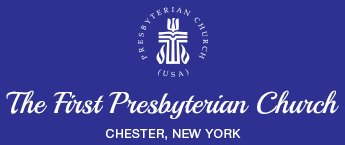Church history
Before the Revolutionary War residents of Chester traveled to neighboring communities to attend church or held private services in private homes or schools. These services were presided over by itinerant ministers when they were available. In 1783 Abijan Yelverton donated an acre of land for the construction of a church. The site selected was a knoll about 500 yards southeast of the present church location. The land was cleared, trees were felled and cut into lumber, but the call to arms for the Revolutionary War halted the building process.
After the war building resumed. The result was a bare log cabin with rough hewn log benches for pews, but by August of 1798 the congregation finally had a home. They hired Rev. Simeon R. Jones at a salary of $75.00 per year and allowed him to teach school to augment his salary. By 1802 the church was finally finished. The log benches were replaced by square stall-like pews, a wine glass pulpit and after some disagreement, galleries and a steeple completed the project. (Some claiming that a steeple was indicative of too proud a spirit). Pew rents were used to finance the improvements.
The church and its congregation came under the care of the Hudson River Presbytery and thus became part of the General Assembly of the Presbyterian Church of the USA in 1810.
In 1819 the need for a parsonage was discussed and land was purchased at the junction of High St. and Hambletonian Ave. and the parsonage was constructed. The house was later to become an active station on the Underground Railway for escaped slaves before and during the Civil War.
Eventually the congregation out-grew their first building and erected a second one at the fork on the Oxford and Sugar Loaf Roads, where the Chester Cemetery is now located. It was dedicated on Christmas Day 1829.
By 1851 the need for a new church building was again recognized and a committee was formed to find a suitable location for a new house of worship. Property from the estate of Anthony Yelverton was decided upon and subscriptions circulated to finance the new edifice. The new, much larger church was dedicated January 4, 1854 with the Rev James W. Wood presiding. About 6 years later a friend of Rev. Wood’s presented the congregation with a large sweet-toned bell with the suggestion that it was loud enough to waken any sleeping parishioners. The bell was also used to summon volunteer firemen to fires.
A combination chapel and lecture room was added to the rear of the church in 1884 to be used for meetings and Sunday School. On the church’s 100th anniversary stained glass windows replaced the clear ones in the sanctuary and in 1925 a handsome Esty organ was added. It’s beautiful tones and the colorful windows are the glory of the sanctuary to this day.
The original parsonage was replaced in 1893 with one on the North side of the church. The church acquired the house on the South side of the church in the 1950’s to be used as a manse. The 1893 was eventually sold to the funeral home.
The latest addition was the Christian Education Building in 1967. The addition housed the Pastor and secretary’s offices, a library and classrooms on one floor and a large kitchen and dining room below.
As this is written in 2016 the congregation has about 50 members, a small, but growing, Sunday School program and various activities such as bible studies and devotionals. An important ministry is housing the Chester Community Food Pantry. The church serves several community dinners each year, sponsors Boy Scout Troop 152 and provides space for several support groups.
**History adapted from “The Chester (N.Y.) Presbyterian Church: A History 1799-1965” by Helen R. Predmore.

